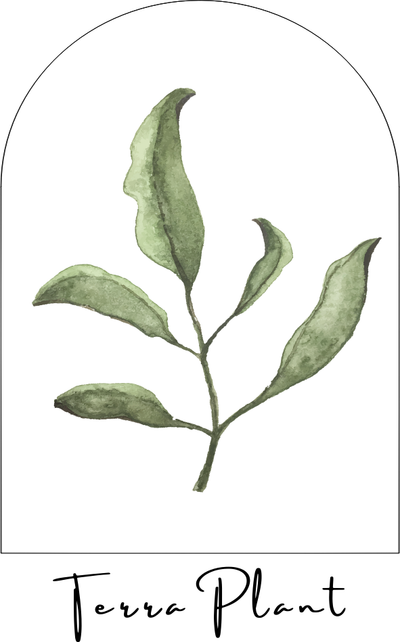FAQ
How to take care of a closed terrarium?
It's preferable (no compulsory) to rotate your terrarium every month and to avoid placing it next to windows, AC, or heaters. Even though the condensation will water your terrarium, we recommend you to check it at first every months, then 3, then every 6 months.
A yearly cleaning can help your terrarium to keep it's original shape (clean the glass, cut the extremities of the bigger plants, remove the organic waste. You can also leave it be.
A yearly cleaning can help your terrarium to keep it's original shape (clean the glass, cut the extremities of the bigger plants, remove the organic waste. You can also leave it be.
How does the condensation works?
Inside the glass, the water cycle is working at night, if water levels are correct, condensation should form mainly on one side/part of the terrarium and usually at night. If no condensation forms at all inside of the terrarium you can add a couple of teaspoon of mineral water depending on its size.
However if you see big rolling drops all the time, wipe it off with a paper towel and seal the top again. As long as the soil is dark and that the plant is growing you don't need to do anything.
However if you see big rolling drops all the time, wipe it off with a paper towel and seal the top again. As long as the soil is dark and that the plant is growing you don't need to do anything.
My terrarium is full of mold
Even though we take great care in cleaning our jars, plants and adding powder to reduce the mold or fungus cases. It is very difficult to regulate as mold can be find in soil, moss or plant spores, branches, air and can be increased by wrong maintenance.
Last but not least Let it run.
- The most common thing is to add oxygenated water (only on the moldy parts). Thanks to its fizzing action, hydrogen peroxide is an effective way to kill mould on porous materials.
- You can remove and quarantine or cut– If the mold outbreak is localised to certain plants or hardscape elements, you can remove the affected objects and quarantine them elsewhere.
- Air it out – Mould thrives on moisture, opening up a closed terrarium and increasing air flow will reduce both the humidity and the total level of water in the container.
Last but not least Let it run.
How to take care of an open terrarium?
Water your terrarium once per week, and adapt in colder/warmer days. Avoid placing it next to windows, AC, or heaters and adapt depending on low to medium light requirement. Using a spray will allow you to spray everywhere without damaging the display. Rotate your terrarium monthly and we recommend you to yearly clean your terrarium (glass, remove the organic waste, prune the extremities, add fertilizer).
My moss is dying, why?
To keep moss green in a terrarium, ensure it gets indirect light, proper humidity, and avoid over-watering. Moss thrives in a moist but not soggy environment, so be mindful of drainage. Brown moss can result from too much direct sunlight, dry air, or poor moisture levels. If it turns brown, try adjusting the humidity and light conditions or replace it with fresh moss. Regularly check for stagnant water or decay, which can also affect moss health.
Can I get rid of intruses?
Insect or gnats (small flies) can sometimes appear in your terrarium. You can either let them live as part of your plant ecosystem or remove them. To make them leave you'll have to aerate your terrarium and let the 1 inch (3cm) of the soil dry to make all the larvae dies, the rest will only live few days.
Mushrooms, snails, Collembola, Lombrics are considered as valuable assets to your ecosystem, however, funguses, Grasshopper, Red spiders need to be removed or treated (organic or natural products is preferable).
Mushrooms, snails, Collembola, Lombrics are considered as valuable assets to your ecosystem, however, funguses, Grasshopper, Red spiders need to be removed or treated (organic or natural products is preferable).
Succulent maintenance
Place your terrarium in a bright location but without direct sun. Succulents should be watered at least once a week between April and October, let the potting mixture dry out between watering in very cold months, once per month is enough. When a succulent or a cactus become soft it means that the plant receives an excess of water. However if the plant leaves become thick you should water it more.
Cut the flowers of your succulents at the end of Summer and remove the dried leaves gently if needed.
Cut the flowers of your succulents at the end of Summer and remove the dried leaves gently if needed.
Dying or falling leaves
It's important to keep in mind that dying leaves are a natural part of every plant’s life, this doesn’t always mean that your plant is dying or you're doing it wrong. As your plant grows, it creates new leaves, while the older ones die. However it's always better to look for a cause if you see an increase of falling yellow leaves (lightening or watering disorder), black stains (sunburn or deficiency), or insect attack.
